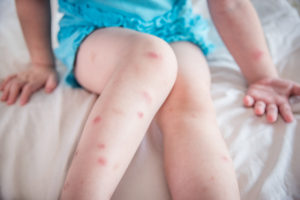 Warmer weather brings with it a number of pests, including ants, cockroaches, spiders, and of course, bed bugs. Once considered to be on the decline ever since the 1930s, bed bugs have made a spectacular comeback since the 1980s and are now, unfortunately, as prevalent as ever.
Warmer weather brings with it a number of pests, including ants, cockroaches, spiders, and of course, bed bugs. Once considered to be on the decline ever since the 1930s, bed bugs have made a spectacular comeback since the 1980s and are now, unfortunately, as prevalent as ever.
Bed bugs feed almost exclusively on blood, and while humans may not be their host of choice, we tend to be a very attractive substitute, with plenty of exposed skin. The face, neck, and arms of a sleeping person are particularly vulnerable. When feeding, bed bugs can saw through skin, and in 5 to 10 minutes become completely engorged with blood. Their saliva contains anti-clotting agents and also painkillers which might explain why 1 in 5 people don’t feel a thing.
A well-nourished female can lay 3 to 4 eggs each day continually until the end of her 9-month lifespan. If you do the math, that can mean well over 500 eggs! Indeed, a single female may be responsible for an entire infestation in less than a month.
So how do you get rid of them? One way is to fight fire with fire. But the thought of releasing an army of natural enemies— ants, cockroaches, and spiders— to combat them is hardly an attractive option. Pesticides can be effective, but bed bugs have become increasingly resistant to them over the years. Moreover, many pesticides are unsafe for children and pets. For example, the insecticide propoxur is effective, but also highly toxic, and the EPA has been reluctant to approve it for home use. Fortunately, there do exist natural and safer alternatives to bed bug elimination. If you have a bed bug problem, we are happy to come take a look and provide you with some professional advice. Call us for free inspection at 1-877-662-8449.

